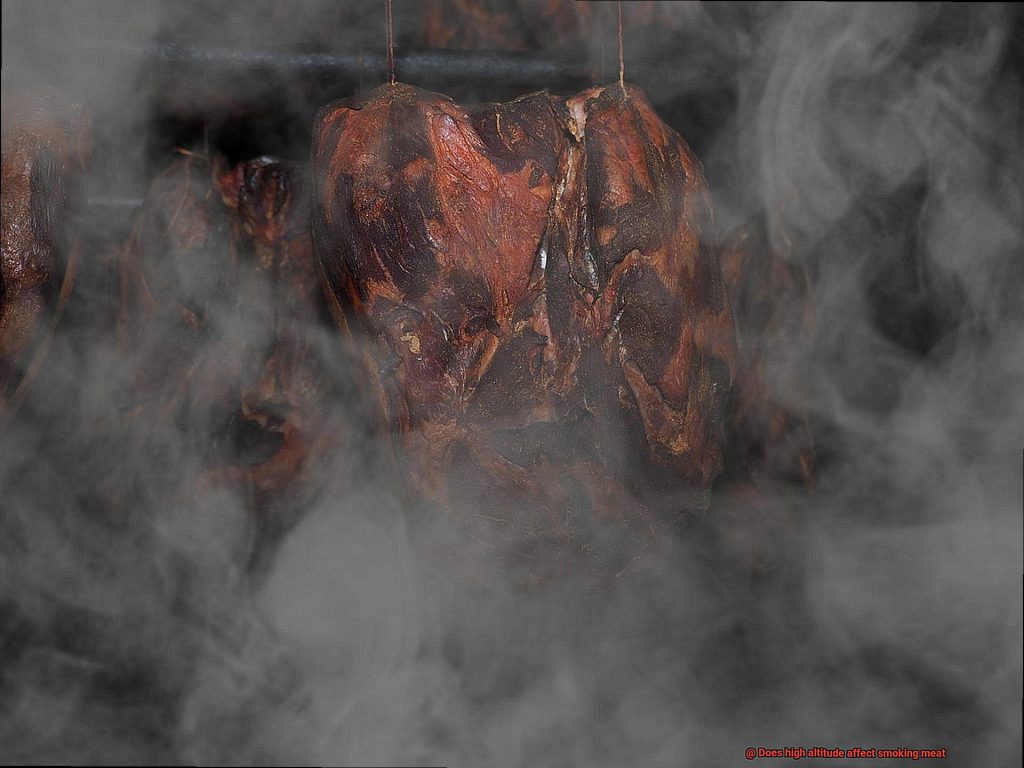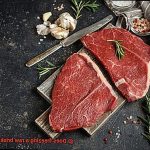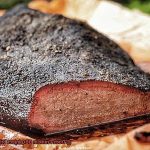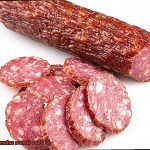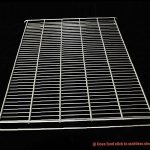Welcome to our blog where we explore the mouthwatering world of smoking meat.
Today, we’re diving into a topic that might just blow your taste buds away – the impact of high altitude on this smoky culinary adventure. Smoking meat has always been a time-honored tradition, infusing flavors that make your senses dance and creating textures that melt in your mouth.
But what happens when you take this delectable process to new heights? Are there any changes in taste or cooking times?
Get ready to unravel the mysteries as we uncover the surprising ways high altitude can affect smoking meat. We’ll dish out scientific explanations and share valuable tips for mastering the art of smoking meat at various elevations.
So grab your apron and let’s get smokin’.
Contents
What is High Altitude?
Embarking on a culinary journey to new heights is an exhilarating experience, especially when it involves smoking meat. But what exactly does it mean to smoke meat at high altitude? In this comprehensive guide, we will delve into the captivating world of high altitude and its intriguing impact on the art of smoking meat.
From unraveling the mysteries of lower atmospheric pressure to mastering temperature control, get ready to elevate your smoking game and conquer the summit of flavor.
Understanding High Altitude:
High altitude refers to regions situated at a significant height above sea level, typically commencing at around 5,000 feet (1,500 meters). These elevated areas boast lower atmospheric pressure, reduced oxygen levels, and colder temperatures. Discover these geographic wonders in mountainous regions and elevated plateaus across the globe, such as the majestic Himalayas, the breathtaking Andes, and the awe-inspiring Rocky Mountains.
The Effects of High Altitude on Smoking Meat:
- Longer Cooking Times: At high altitudes, the lower air pressure alters the boiling point of water, resulting in lengthier cooking times. Overcome this challenge by slightly increasing your cooking temperature and rely on a trusty digital thermometer to accurately monitor the internal temperature of your meat.
- Temperature Control: Cooler temperatures prevalent in higher elevations can pose difficulties in maintaining a consistent temperature within your smoker. By carefully adjusting temperatures and incorporating water pans in your smoking process, you can achieve the desired results and unlock a world of smoky perfection.
- Moisture Retention: The drier air found at higher altitudes can cause meat to lose moisture at a faster rate during smoking. Combat this by utilizing a water pan in your smoker, marinating your meat before smoking, and basting it throughout the cooking process to ensure succulent and juicy results.
- Flavor Considerations: The unique combination of lower air pressure and cooler temperatures at high altitudes influences how smoke interacts with the meat, resulting in a distinctive taste profile. Experimentation with various wood chips and seasoning blends can help counteract any potential flavor alterations caused by the high altitude environment.
Smoking meat at high altitudes adds an exhilarating twist to the culinary experience. By comprehending the impact of lower atmospheric pressure, reduced oxygen levels, and colder temperatures, you can adapt your smoking techniques to achieve extraordinary results. Embrace the challenges presented by high altitude and allow your taste buds to soar to new heights of flavor. Get ready to embark on a smoky adventure like no other. Happy smoking.
How Does High Altitude Affect Smoking Meat?
Picture yourself atop a majestic mountain, surrounded by awe-inspiring vistas, as the tantalizing scent of smoked meat dances through the crisp, thin air. But hold on – does high altitude affect the art of smoking meat? Absolutely. In this captivating blog post, we’ll unveil the mesmerizing ways that high altitudes can impact the smoking process. Prepare to be enlightened as we provide you with invaluable tips and techniques to ensure your culinary creations soar to unprecedented heights of flavor.
The Air Pressure Effect:
High altitudes bring about a drop in air pressure, triggering fascinating changes in the cooking process. As a result, water evaporates faster due to the lower boiling point. This means your meat might dry out prematurely if not handled with finesse. To counter this challenge, embrace moisture-retention techniques such as brining, marinades, or regular basting to preserve succulence.
Combustion Conundrums:
With less oxygen available at lofty heights, maintaining consistent temperatures and proper airflow in your smoker becomes an intricate dance. Skillfully adjusting your cooking techniques and vigilantly monitoring temperature fluctuations becomes paramount in achieving perfection. Keep a watchful eye on your smoker’s performance and make swift adjustments when necessary.
Extended Cooking Time:
The lower boiling point of water at high altitudes means that reaching the ideal internal temperature of your meat may demand more patience than usual. Stay vigilant and employ a reliable thermometer to ensure food safety while accounting for potential variations induced by altitude.
Moisture Management:
The arid air at elevated altitudes accelerates moisture loss during smoking. But fear not. By incorporating moisture-rich ingredients and employing moist cooking methods like foil wrapping or water pans in your smoker, you can thwart dryness and retain delectable flavors.
Flavor Development:
The diminished oxygen levels at high altitudes can potentially impede the development of that coveted smoky essence. But fret not, grill enthusiasts. By tweaking cooking techniques and experimenting with robust wood varieties like hickory or mesquite, you can still unlock that mouthwatering smokiness. Dare to explore a plethora of seasonings to intensify flavors and ignite taste bud symphonies.
External Elements:
Unyielding winds and temperature fluctuations reign supreme at higher altitudes, demanding your utmost consideration during the smoking process. Shield your smoker from gusty breezes and adjust cooking times accordingly. Remember, patience is the secret ingredient when smoking meat amidst lofty peaks.
Longer Cooking Time at High Altitudes
Close your eyes and imagine yourself surrounded by majestic peaks, inhaling the crisp mountain air as your smoker weaves its aromatic magic. But be prepared, my friends, for things can get a tad tricky at lofty heights.
Let us delve into the fundamentals. At high altitudes, where the air pressure is lower, the boiling point of water takes a plunge. This means that water reaches its boiling temperature at a lower degree than it would at sea level. And why does this tidbit matter, you may wonder? Well, when you’re indulging in the art of smoking meat, the moisture within takes its sweet time to evaporate and reach that delectable internal temperature. In simpler terms, your meat requires a little extra time to cook through.
Ah, but here comes the twist. This extended cooking duration can indeed affect the texture of your smoked marvels. Imagine sinking your teeth into a juicy slice of brisket or pork shoulder only to find it slightly tougher than anticipated. The culprit? The collagen residing in those connective tissues takes its own sweet time to unravel at high altitudes. Thus, my friends, do prepare yourself for a potential chewier outcome when smoking larger cuts of meat.
But fear not. Solutions lie within reach, allowing you to conquer this culinary challenge and still revel in tender and flavorful results. The secret lies in foresight and embracing additional cooking time. Commence your smoking escapades earlier or tweak your overall cooking agenda to ensure perfection.
Vigilance regarding internal temperature is paramount. Invest in a trustworthy meat thermometer to guarantee that your creations reach both safe and desired levels of doneness, irrespective of altitude.
Oh, let us not overlook our faithful accomplice – the smoker or grill. The lower air pressure can wreak havoc on combustion processes and airflow. Be sure to inspect and adjust your equipment accordingly, ensuring consistent heat levels throughout the cooking journey.
Now, my dear comrades, brace yourselves for the most exhilarating part – experimentation. Each high-altitude locale boasts its unique characteristics. Embrace the thrill of trial and error as you test diverse cooking times, temperatures, and techniques to uncover the formula that best suits your culinary desires. Remember, adaptability is the spice that adds zest to life’s feast.
Cooler Temperatures and Inconsistent Temperature Control
Grilling is an art form that requires precision, patience, and the perfect balance of heat and smoke. But when it comes to smoking meat at higher altitudes, cooler temperatures and inconsistent temperature control can throw a wrench into even the most seasoned grill enthusiast’s plans. Don’t worry though. With a few expert tips and tricks up your sleeve, you can overcome these challenges and create mouthwatering smoked meats that will make your taste buds dance with delight.
Embrace the Power of Precision:
When smoking meat at high altitudes, cooler temperatures become a major factor to consider. The colder air takes longer to heat up and penetrate the meat, which means you’ll need to adjust your cooking times accordingly. To combat this challenge, invest in a reliable smoker with adjustable vents and thermostats that allow for precise temperature control. By maintaining a steady smoking temperature, regardless of the altitude, you’ll ensure that your meats are cooked to perfection every time.
Preheating: A Crucial Step:
Preheating your smoker before adding the meat can make all the difference when it comes to achieving consistent results at higher altitudes. By preheating, you’re giving yourself a head start on the cooking process, compensating for the cooler temperatures. This ensures that your smoker is already at the desired temperature before you begin smoking, setting you up for success from the get-go.
Insulation is Key:
Fluctuating temperatures can wreak havoc on your smoking experience at high altitudes. To combat this, consider using insulation or additional heat sources like heat lamps or blankets to create a consistent heat barrier around your smoker. These measures will prevent any sudden drops in temperature and guarantee even cooking throughout.
Monitor Internal Temperatures:

At higher altitudes, carefully monitoring the internal temperature of your meat becomes paramount. Use a reliable meat thermometer to accurately measure the internal temperature and prevent undercooking or overcooking. Remember, patience is key. The colder temperatures at higher altitudes may slow down the cooking process, so be prepared to allow for longer cooking times to ensure that your meats are cooked to perfection.
Experiment and Adapt:
Every grill master knows that experimentation is the key to culinary success. Smoking meat at high altitudes is no different. Be willing to adjust your cooking times and temperatures based on personal experience and preferences. This willingness to adapt will help you fine-tune your technique and achieve optimal results, even in the face of cooler temperatures and inconsistent temperature control.

Drying Effect of High Altitude
Imagine standing on a mountaintop, surrounded by breathtaking views, and the tantalizing aroma of smoked meat wafting through the crisp mountain air. Ah, the joys of grilling at high altitudes.
But did you know that the drying effect of high altitude can affect your smoking game? Fear not, grillmasters. In this guide, we’ll explore how high altitude impacts smoking meat and share some expert tips to ensure your meats stay juicy and flavorful.
Understanding the Drying Effect:
At high altitudes, the lower air pressure affects the boiling point of water. This means that water evaporates more quickly, leaving your meat vulnerable to dehydration. There are ways to combat this drying effect and keep your meats succulent and mouthwatering.
Marinating Magic:
- Marinating your meat before smoking is a game-changer.
- The marinade acts as a flavor enhancer and a moisture retainer.
- It helps seal in precious juices, resulting in tender and juicy bites.
Hydration is Key:
- Introduce a water pan inside your smoker.
- This trick helps maintain humidity levels.
- Prevents excessive moisture loss from your meats.
- Adds a subtle smoky steam to enhance flavors.
Time and Temperature Adjustments:
- Increase both cooking time and temperature.
- Ensure thorough cooking due to lower boiling point of water.
- Remember, undercooked meat is a griller’s worst nightmare.
Trust Your Thermometer:
- Invest in a reliable meat thermometer.
- Accurately gauge the internal temperature of your meats.
- Visual cues alone may not be reliable at high altitudes.
- A small investment guarantees perfectly cooked masterpieces.
Embrace Experimentation:
- Trial and error are key at high altitudes.
- Experiment with different smoking techniques, recipes, and wood chips.
- Find the perfect balance between cooking time, temperature, and moisture retention.
- Your taste buds will thank you.
Impact on Flavor Profile
Picture this: you’re nestled in the serene embrace of the mountains, planning a mouthwatering getaway filled with the tantalizing aroma of smoked meat. But before you ignite your smoker at high altitude, let’s unravel the captivating impact it has on the flavor profile of your culinary creations.
At higher altitudes, the thin and arid air plays a leading role in the cooking process, ushering in a medley of distinctive flavors. The reduced oxygen levels, a hallmark of high altitude smoking, result in slower combustion and lower temperatures within the smoker. Brace yourself for longer cooking times that yield tender and juicy meat. However, beware the siren call of prolonged exposure to smoke, which can render your masterpiece overly smoky or even bitter. No one craves a dish that leaves a charred aftertaste.
Another captivating effect of reduced oxygen levels is the ethereal dance of smoke rings. Those mesmerizing bands that grace barbecued delights with their visual allure and rich flavors might not be as pronounced at high altitudes or may even disappear altogether. So, don’t fret if your smoked masterpiece lacks that coveted smoke ring while perched amidst lofty peaks.
Now, let’s immerse ourselves in the impact of the crisp mountain air. The dryness becomes both an ally and foe during the smoking process. On one hand, moisture loss becomes a constant companion, urging caution and measures to preserve succulence. But here’s where nature reveals her secret: the drier air intensifies the essence of spices and seasonings used in your rub or marinade. Brace yourself for a symphony of flavors that will ignite your taste buds and transport you to gustatory bliss.
Temperature control emerges as yet another mountain to conquer when smoking meat at high altitudes. Water boils at a lower temperature amidst these lofty realms, making it more challenging to maintain a consistent temperature in your smoker. As temperature fluctuations dance around the flames, they whisper secrets that alter the destiny of your smoked meat’s flavor.
Adjustments for Smoking Meat at High Altitudes
Smoking meat at high altitudes is like scaling a culinary mountain, but with the right adjustments, you can conquer the peaks of flavor. Here are some key adjustments to ensure a successful smoking experience amidst the thin air.
- Use a Digital Thermometer: The lower boiling point of water at high altitudes affects the temperature inside the smoker. To conquer this challenge, equip yourself with a trusty digital thermometer. This essential tool allows you to monitor the internal temperature of the smoker, ensuring your meat cooks evenly and thoroughly.
- Monitor Cooking Time: Due to the lower boiling point, it may take longer for your meat to reach its desired internal temperature at high altitudes. Keep a watchful eye on the cooking time and rely on a reliable meat thermometer to ensure your meat is cooked safely and thoroughly. Remember, patience is key when smoking meat amidst thin air.
- Increase Fuel Usage: The lower atmospheric pressure at higher altitudes causes fuel to burn faster. To combat this, you may need to increase the amount of fuel used in your smoker. This adjustment ensures that you maintain a consistent temperature throughout the smoking process, preventing any unexpected temperature drops.
- Adjust Wood Selection: The type of wood used for smoking significantly impacts the flavor of your meat. At higher altitudes, where the air is thinner and drier, it’s crucial to adjust the amount and type of wood used. Using less wood or opting for milder woods helps prevent an overpowering smoke flavor and maintains a harmonious balance.
- Moisture Management: The drier air at high altitudes accelerates water evaporation in the smoker’s water pan. This can result in a drier smoking environment, potentially affecting the moisture content of your meat. Vigilantly monitor the water level in the pan and replenish it as needed to maintain a moist smoking environment.
Monitoring Internal Temperature of the Meat
Embarking on a culinary adventure of smoking meat can be both challenging and rewarding. Whether you’re a seasoned pitmaster or a novice cook, monitoring the internal temperature of the meat is paramount to ensure both safety and an exquisite flavor profile. In this comprehensive guide, we will delve into the significance of monitoring internal temperature, explore the tools required for accurate measurements, and provide invaluable tips for achieving smoking perfection.
The Importance of Monitoring Internal Temperature:
Smoking meat is a delicate process that requires precision. At higher altitudes, the lower boiling point of water affects the cooking process, posing unique challenges. The thinner air results in faster evaporation of moisture from the meat, leading to dry and tough textures. By vigilantly monitoring the internal temperature, you can safeguard against such pitfalls and achieve the desired doneness while preserving juiciness and tenderness. Moreover, accurately monitoring temperature is vital for food safety as it ensures that any harmful bacteria present in the meat are effectively killed, rendering it safe for consumption.
Tools for Accurate Measurements:
To navigate the complexities of monitoring internal temperature during smoking, investing in a reliable meat thermometer is essential. Instant-read thermometers offer quick readings and are ideal for checking the final temperature of cooked meat. On the other hand, probe thermometers allow for continuous monitoring throughout the smoking process, providing invaluable insights into temperature fluctuations. Choose a thermometer that suits your specific needs and always adhere to the manufacturer’s instructions for proper usage.
Tips for Success at High Altitudes:
- Embrace Patience: The lower boiling point at higher altitudes necessitates a longer cooking time to achieve the desired internal temperature. Avoid rushing the process and allow ample time for your meat to reach perfection.
- Minimize Smoker Openings: Frequent opening of the smoker can cause heat loss and extend cooking time. Maintain a consistent temperature by minimizing openings and ensuring proper insulation.
- Follow USDA Guidelines: The United States Department of Agriculture (USDA) provides safe minimum internal temperatures for various types of meat. Adhere to these guidelines to eliminate any potential foodborne pathogens and ensure optimal safety.
- Adjust Cooking Time and Fuel Usage: Due to the unique challenges posed by high altitudes, you may need to increase cooking time and fuel usage to maintain consistent heat levels and achieve the desired internal temperature.
regfyWUNigQ” >
Conclusion
In conclusion, it is clear that high altitude does indeed affect the process of smoking meat. The lower air pressure and thinner atmosphere at higher elevations can have a significant impact on the cooking time, temperature, and overall outcome of smoked meats. The reduced oxygen levels can make it harder for the wood chips or charcoal to ignite and maintain a consistent heat, leading to longer cooking times and potentially uneven results.
Additionally, the drier air at higher altitudes can cause the meat to dry out more quickly during the smoking process. This means that extra care must be taken to ensure proper moisture levels are maintained throughout the cooking time. It may be necessary to baste or spritz the meat more frequently to prevent it from becoming too dry.
Furthermore, the lower boiling point of water at higher altitudes can affect the formation of smoke and flavor absorption in the meat. The lower boiling point means that water will evaporate more rapidly, potentially reducing the amount of smoke produced during the cooking process. This could result in a milder flavor profile compared to smoking at sea level.
Overall, while high altitude smoking presents some challenges, it also offers unique opportunities for experimentation and adaptation. By understanding and adjusting for these factors, smokers at high altitudes can still achieve delicious and flavorful results. So whether you’re smoking meat in the mountains or by the sea, remember to consider how altitude might impact your culinary endeavors.

